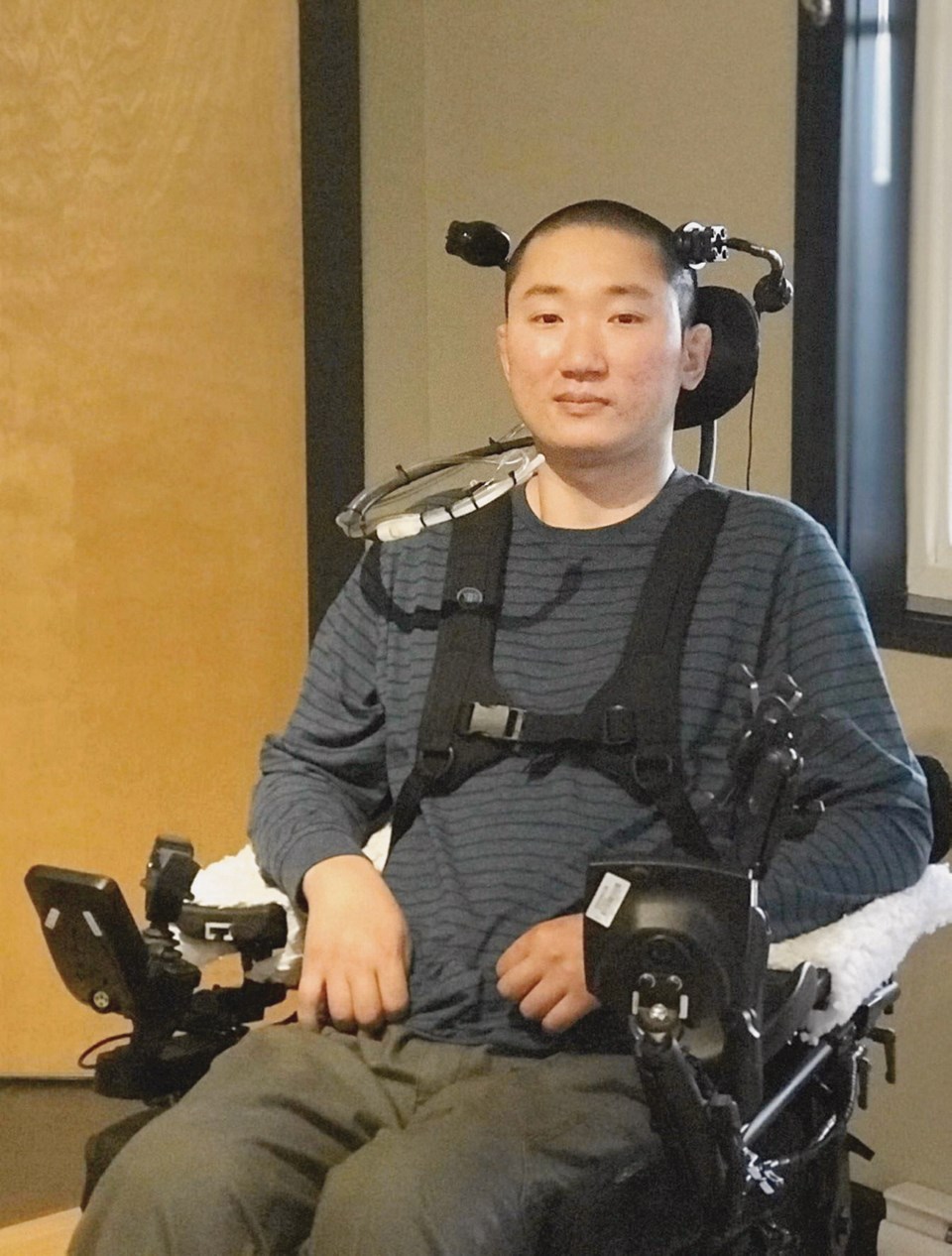Peter Yeo was an active 32-year-old in summer 2017 when a freak accident left him paralyzed from the neck down.
He was at his front door, looking for his keys. Both hands were in his pockets and he lost his balance, falling with nothing to break his momentum.
His forehead hit a concrete wall and he suffered severe brain trauma.
“You can hyperextend your neck and end up with quite a severe spinal-cord injury,” said Dr. Paul Winston, who called Yeo’s accident “a terrible fluke.”
That fluke changed everything in Yeo’s life. “I had a heart full of dreams and a world of plans ahead of me,” Yeo said.
After the accident, he faced restricted movement. He had to install a lift and hospital bed in his house. He had to move back in with his parents. He said he was “heavily” depressed for eight months.
These days, after extensive medical treatment, he is adjusting well to his new reality and appreciates what has been done for him — referring to himself as “a grateful patient.”
Yeo is telling his story to highlight the Victoria Hospitals Foundation’s Big Picture Campaign, which is raising $4 million for medical-imaging equipment.
In Yeo’s case, the use of ultrasound technology allowed Winston to get a detailed look at Yeo’s condition. Winston is an expert on how to use ultrasound to guide injections for spasticity — a muscular problem caused by injury to the brain or the spinal cord.
He said spasticity robs the body of movement to varying degrees, but ultrasound makes treatment possible.
“We look at all of the muscles under ultrasound so we can see how one muscle slips and slides over the other,” Winston said. “So we know what muscles cause which twisting and stiffness of each muscle.”
Ultrasound technology ensures injections go in the right place, he said.
Winston likened ultrasounds, which produce images using sound waves, to “modern stethoscopes” and “high-tech compasses” that allow health professionals to see under the skin in real time.
The Big Picture Campaign is supporting the purchase of a new ultrasound machine for the Victoria General Hospital rehabilitation clinic, Winston said.
He said Victoria General has a highly specialized team that uses ultrasound to treat nerve problems, including plastic surgeon Dr. Emily Krauss and anesthesiologist Dr. Daniel Vincent. Krauss transferred active nerves from Yeo’s shoulders to his triceps to improve his motion.
She is one of the few people in the world who does the procedure.
Yeo said that after six months, he could extend his arms again. “I went from no movement at all to moving my upper arms again. Incredible.”
Yet another procedure on his chest muscles is believed by the doctors to be a first anywhere.
He said his treatment began at Victoria General Hospital, followed by a move to Vancouver for spinal-cord decompression surgery.
He is now back at Victoria General undergoing more therapy with Winston.
“I’m so thankful to be home and close to family again,” Yeo said.
Winston has done incredible things for him, said Yeo, who feels as if he is starting to get his life back.
“He did a lot for me to maximize the movement of my body and tried lots of different procedures with me.”
Yeo said that when the two first met, Winston was more excited about his recovery than he was.
“Not only is he a great physician, he’s one of my biggest motivators.”
He said he sees Winston once every three months, and credits him with changing both his life and his perspective.
Yeo has improved enough to return to work at Quality Foods for four hours a week.
“It’s really nice to see the old colleagues,” he said. “Mentally, it’s refreshing, too. I’m not doing exactly the same thing that I used to do, but I still have vision and brains.”
He also goes to the gym three times a week and is getting back into the community.
“I am so proud of him for his hard work,” said Winston, who urged people to support the Big Picture Campaign.
“You can ease someone’s pain. Help them move again. Lift their grandchild. Feed themselves.”
BIG PICTURE CAMPAIGN
Donations to the Big Picture Campaign can be made:
• Online at victoriahf.ca/bigpicture
• By phoning 250-519-1750
• By mail to Wilson Block, 1952 Bay St., Victoria, B.C., V8R 1J8



